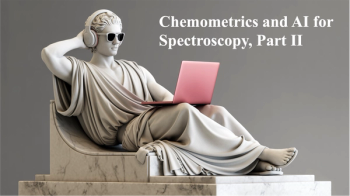
Advancing the Application of NIR Spectroscopy
Although near-infrared (NIR) spectroscopy is not a particularly sensitive technique, it can be implemented with little or no sample preparation and thus is well suited to applications such as process monitoring, materials science, and medical uses. We asked a panel of experts to comment on important current applications of NIR, as well as emerging new areas of application and the challenges involved in those newer applications.
Although near-infrared (NIR) spectroscopy is not a particularly sensitive technique, it can be implemented with little or no sample preparation and thus is well suited to applications such as process monitoring, materials science, and medical uses. We asked a panel of experts to comment on important current applications of NIR, as well as emerging new areas of application and the challenges involved in those newer applications.
“NIR spectroscopy started with Karl Norris’s work in the 1960s, and his work was on agriculture,” said Pierre Dardenne, who is a department head at Walloon Agricultural Research Centre, which is part of the Wallonia regional government in Belgium. “I believe agriculture remains the main user of the technology, especially for the determination of the feeding value for animals,” he added. Benoit Igne, a principal scientist at GlaxoSmithKline agreed that agriculture-including crops, animals, forestry, and soil-is certainly the most important area of application for NIR.
All of our panel members agreed that the pharmaceutical industry is another important current application. “Within the pharmaceutical manufacturing area continuous manufacturing solutions have garnered huge interest by both the manufacturing companies and the regulators,” said Gary McGeorge, a senior principal scientist at Bristol-Myers Squibb. “This paradigm shift in manufacturing requires continuous process verification to ensure that the system is in steady state and is delivering product of acceptable quality.” McGeorge further noted that without noninvasive sensors such as NIR spectrometers embedded in each unit operation to ensure the uniformity of drug formulations, this shift would not have been made so quickly.
Igne had a slightly less positive view of the use of NIR in the pharmaceutical industry, however. “Regulatory overheads have created comparability burdens between NIR and established analytical methods that limit the adoption of NIR,” he said. “As the regulatory burden eases, it should be easier to embed NIR in the normal control of a manufacturing process, similar to a temperature or a pressure sensor.”
McGeorge noted that the biggest challenge is trying to design spectroscopic solutions in a global regulatory landscape where each country or region has its own expectations. “At the moment these requirements are not clear and each applicant learns the hard way, by trial and error, with the individual health authorities,” he said. “There is simply no clear regulatory roadmap for such applications.” However, he sees progress being made. “This does appear to be changing with the EMA issuing a final guideline for the use of NIR spectroscopy in the pharmaceutical industry and with the FDA now issuing draft guidance that is currently under review,” he said. In addition, the ASTM E55 committee is actively working to provide standards for various areas of pharmaceutical manufacturing that includes the use of in-line, on-line, and at-line spectroscopy. “Through these integrated efforts it is likely that the implementation landscape will become clearer and easier than it was for the early adopters.”
The experts named biomedical analysis as a significant emerging area of application. “Most of the theoretical work on NIR (separation of absorption and scattering) has been done in biomedical analysis to improve our ability to detect and monitor tumors, control glucose, and so forth,” said Igne. “NIR allows the laboratory to come to the bedside, and this is a significant improvement for patients.” Dardenne noted that with NIR in biomedical analysis, validation must be rigorous because the consequences of a mistake would be too dire.
Advances in sampling and sample presentation have allowed NIR to be used more efficiently in these historical fields, said Igne, and they are driving new applications. He thinks the technology has reached a mature state with respect to a fundamental understanding of the technique but that challenges remain. “NIR is, however, still experiencing difficulties interfacing with processes to ensure signal quality and the collection of the most relevant information about the samples,” he said.
This article is an edited excerpt of “
The article is part of a special group of six articles covering the state of the art of key techniques, also including
Newsletter
Get essential updates on the latest spectroscopy technologies, regulatory standards, and best practices—subscribe today to Spectroscopy.





